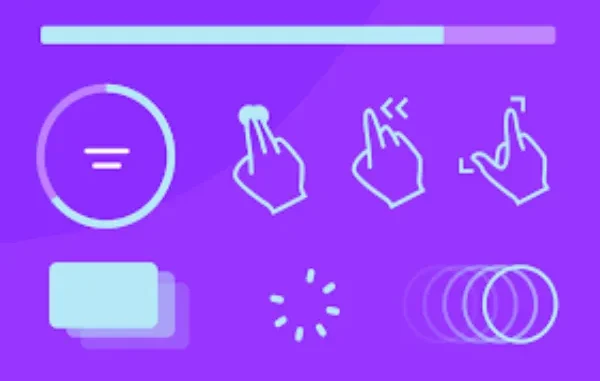
Design in Motion: The Silent Power of Microinteractions
User interfaces today are no longer static. From subtle button feedback to complex page transitions, UI animations have become an essential part of digital product design. They serve a purpose far beyond mere decoration — animations guide users, provide clarity, and reinforce brand identity. Their seamless integration into the user experience often goes unnoticed, yet when removed, their absence is felt immediately.
Emotional Feedback and the Illusion of Control
Every tap, swipe, or click is a form of communication. UI animations transform these simple actions into emotionally satisfying experiences. A bouncing icon or a fluid transition suggests responsiveness and attentiveness from the system. These animations mimic real-world physics, helping users feel a sense of control and natural flow as they navigate interfaces.
Brand Personality in Every Movement
Motion design carries the voice of a brand just as much as its typography or color palette. Whether it’s the playfulness of a springy scroll or the elegance of a fading menu, motion communicates tone. A well-designed animation can reinforce whether an app feels friendly, luxurious, professional, or futuristic — and that identity sticks with the user far more effectively than static visuals.
Performance vs. Experience
Animation-heavy apps often face the challenge of performance. Too many effects can slow down the interface and irritate users. But when carefully designed, animations enhance usability rather than hinder it. Designers and developers must strike a balance between aesthetic movement and functional necessity, ensuring animations are lightweight, purposeful, and fast.
The Psychology Behind Movement
Animations are more than visual effects — they align with how the human brain processes information. Movement naturally attracts attention and signals changes in state or focus. A good animation sequence supports the cognitive flow of the user, showing them what changed, what they can expect next, or where their action led. This is where tools like progress bars, loaders, or confirmation animations shine.
Animations for Accessibility
Thoughtful animations also contribute to accessibility. They help differentiate steps in a process, indicate hierarchy, or guide users with cognitive impairments. Conversely, when overused or too fast, animations can create confusion or trigger discomfort for people with vestibular sensitivities. Modern UI libraries often provide settings for reduced motion, reflecting a more inclusive design philosophy.
From Games to Interfaces: A Shared Language
Many principles of UI animation originated in gaming. Game designers mastered interactive motion long before mobile apps did. The concept of feedback loops, anticipation, and easing — all hallmarks of UI animations — were inherited from game logic. Even entertainment platforms like VBET have adopted these ideas to craft more engaging and reactive interfaces for their audiences.
Future Trends in Interface Animation
Motion design continues to evolve. With the rise of foldable devices, haptics, and spatial computing, designers are rethinking how animations behave across multiple dimensions. Real-time feedback will soon include not just visuals but vibrations, sounds, and environmental changes. And while these innovations emerge, the foundational rule remains: good motion never draws attention to itself — it serves the user quietly and efficiently.
When Stillness Matters Most
As important as movement is, knowing when not to animate is just as critical. Pauses and silence — visual or interactive — carry their own power. Strategic stillness can emphasize content, improve readability, or allow users to rest between tasks. This thoughtful use of contrast elevates the experience from merely functional to emotionally intelligent.
Motion as Craft, Not Ornament
UI animation is no longer an afterthought. It’s a deliberate design decision rooted in psychology, brand storytelling, and human behavior. Behind every elegant swipe lies hours of testing, iteration, and intention. And in the end, when done well, the animation disappears — leaving behind a sense of magic that feels intuitive, effortless, and uniquely human.

Leave a Reply